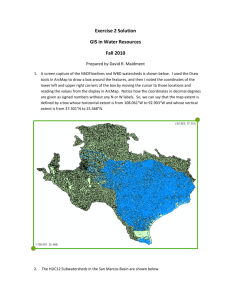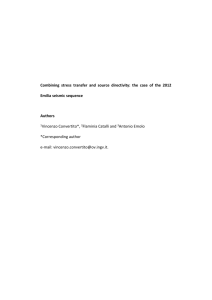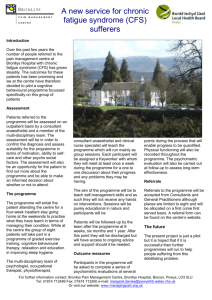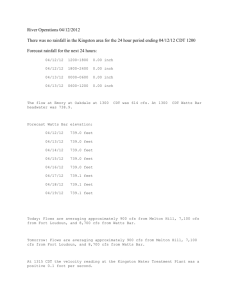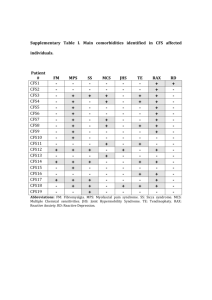Ex2Soln
advertisement
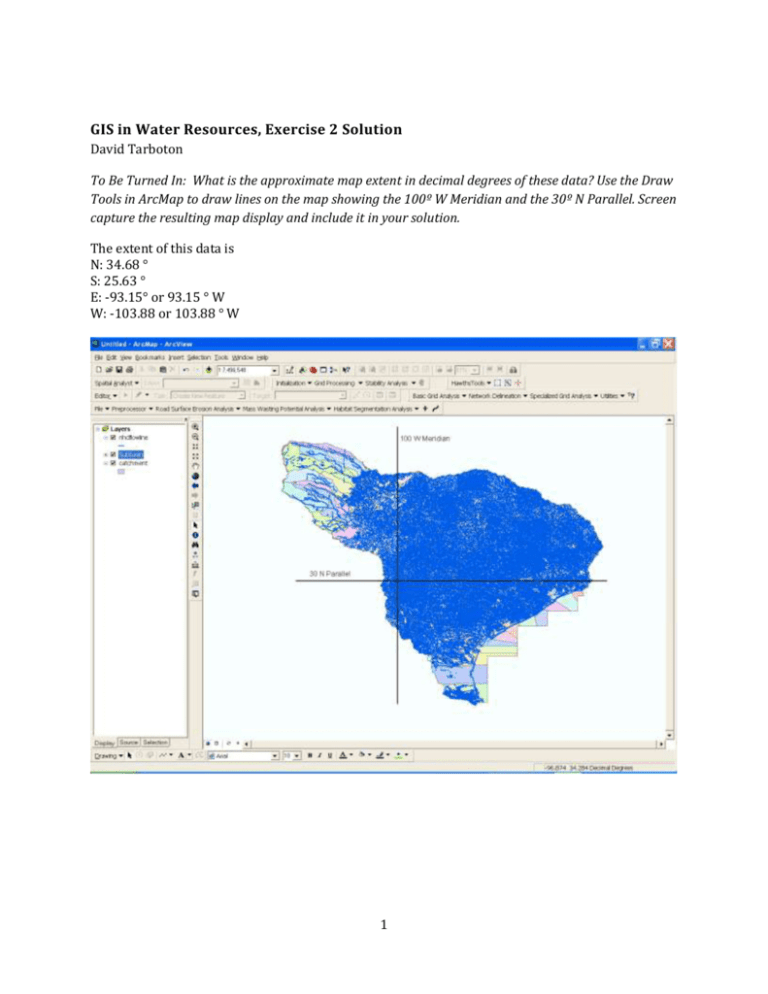
GIS in Water Resources, Exercise 2 Solution David Tarboton To Be Turned In: What is the approximate map extent in decimal degrees of these data? Use the Draw Tools in ArcMap to draw lines on the map showing the 100º W Meridian and the 30º N Parallel. Screen capture the resulting map display and include it in your solution. The extent of this data is N: 34.68 ° S: 25.63 ° E: -93.15° or 93.15 ° W W: -103.88 or 103.88 ° W 1 To be turned in: How many catchments are there in the San Marcos Basin? What is their average area in km2? What is the total area of catchments in this basin in km2? What is the ratio of the length of the streamlines to the area of the catchments (called the drainage density) in km-1? Number of Catchments: 550 Average Catchment area: 6.39 km2 Total area of catchments: 3515.7 km2 Total length of streamlines: 1888.4 km Drainage density (Total Length/Total Area): 1888.4/3515.7 = 0.537 km-1 To be turned in: the layout of the San Marcos Basin and stream. Add labels to show the San Marcos River, the Blanco River and Plum Creek. 2 To be turned in: a layout showing the base map, chart and data table for the San Marcos River flows To be turned in: Between which two gaging stations does the Edwards aquifer outcrop area occur? What is the difference in mean annual flow at these two gages? Comment on these data. Do they seem correct to you? The Edwards aquifer outcrop area occurs between the Blanco River at Wimberly (mean annual flow 142 cfs) and Blanco River nr Kyle (mean annual flow 165 cfs) gauges. The difference in flow between these two gages is 165 cfs (at Kyle) - 142 cfs (at Wimberly) = 23 cfs. Examining the mean 3 annual flow values in NHD+ the reach including the Kyle gage has 248 cfs, while the reach with the Wimberly gage has 213 cfs. These values computed from the drainage area and a mean runoff field are about 50% larger than the measured flows. The net gain from these values (35 cfs) is also about 50% larger than the measured gain of 35cfs. This indicates that the net gain is consistent with increase in drainage area and it is difficult to, from this data, attribute any of the gain to interaction with the Edwards aquifer. The Edwards aquifer does however appear to be responsible for the flow observed in the San Marcos River at San Marcos where the contributing area is a lot smaller and NHD+ flow only estimated to be 30 cfs, compared to the observed mean annual flow of 176 cfs. 4 To be turned in: The graph of flow of the San Marcos River at Luling printed from the NWIS website. What are the 20%, 50%, and 80% cumulative probability flows for the calendar day on which you do the download? Approximately what % cumulative probability is the flow currently? 20% flow: 104 cfs 50% flow (median) 195 cfs 80% flow: 328 cfs Flow on Sept 21: 89 cfs. The min flow f 60 cfs is from 69 years of record, so has a cumulative probability value (using the weibull estimate) of 1/70 = 1.4%. The flow of 89 cfs is between this and the 20% flow, so interpolating (which is a rough approximation), the present flow of 89 cfs has about a 14% cumulative probability value. 5

